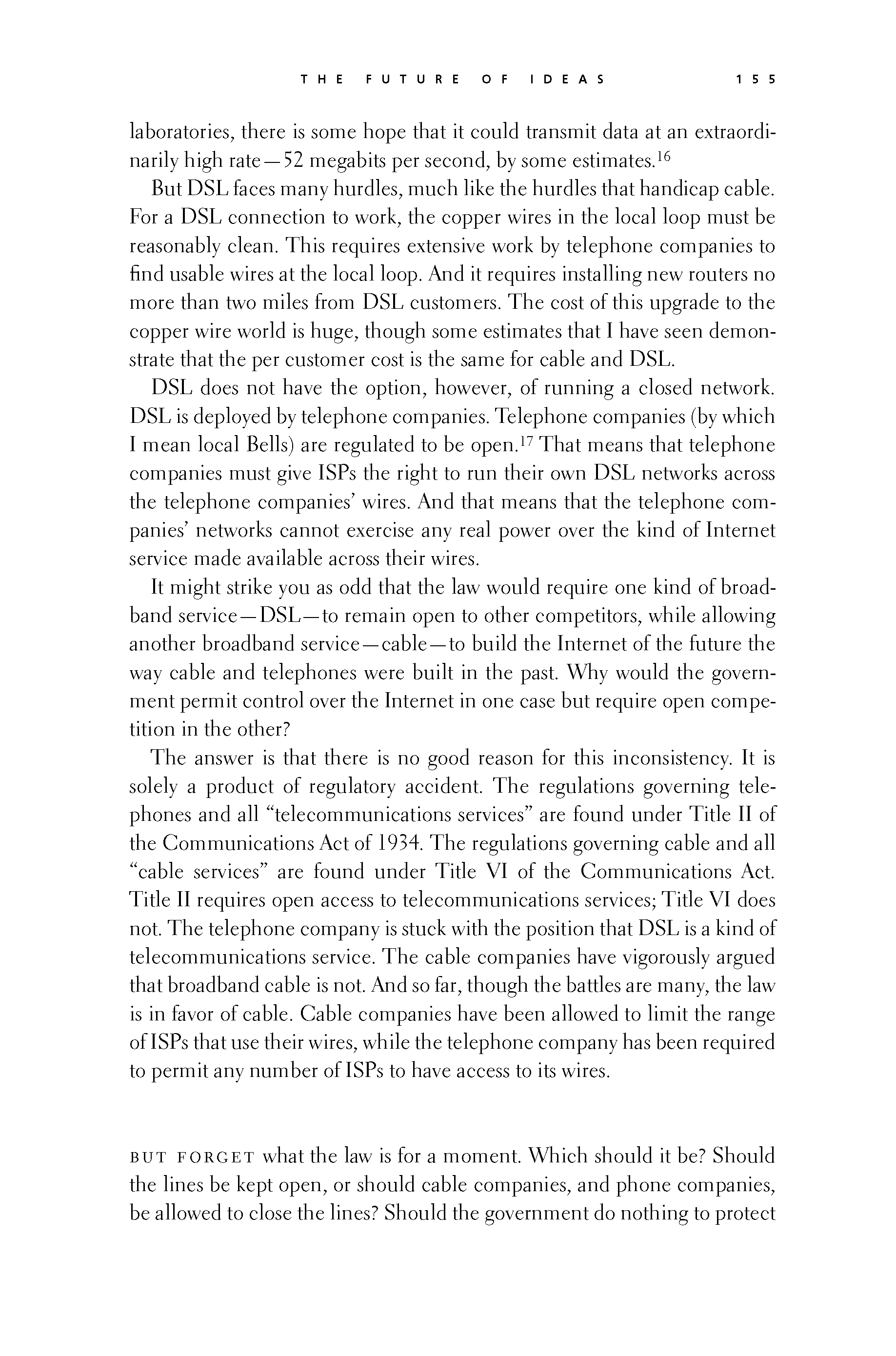 p154 _
-chap- _
toc-1 _
p155w _
toc-2 _
+chap+ _
p156
p154 _
-chap- _
toc-1 _
p155w _
toc-2 _
+chap+ _
p156
laboratories, there is some hope that it could transmit data at an extraordi-
narily high rate -- 52 megabits per second, by some estimates.[10-16]
But DSL faces many hurdles, much like the hurdles that handicap cable.
For a DSL connection to work, the copper wires in the local loop must be
reasonably clean. This requires extensive work by telephone companies to
find usable wires at the local loop. And it requires installing new routers no
more than two miles from DSL customers. The cost of this upgrade to the
copper wire world is huge, though some estimates that I have seen demon-
strate that the per customer cost is the same for cable and DSL.
DSL does not have the option, however, of running a closed network.
DSL is deployed by telephone companies. Telephone companies (by which
I mean local Bells) are regulated to be open.[10-17] That means that telephone
companies must give ISPs the right to run their own DSL networks across
the telephone companies' wires. And that means that the telephone com-
panies' networks cannot exercise any real power over the kind of Internet
service made available across their wires.
It might strike you as odd that the law would require one kind of broad-
band service -- DSL -- to remain open to other competitors, while allowing
another broadband service -- cable -- to build the Internet of the future the
way cable and telephones were built in the past. Why would the govern-
ment permit control over the Internet in one case but require open compe-
tition in the other?
The answer is that there is no good reason for this inconsistency. It is
solely a product of regulatory accident. The regulations governing tele-
phones and all "telecommunications services" are found under Title II of
the Communications Act of 1934. The regulations governing cable and all
"cable services" are found under Title VI of the Communications Act.
Title II requires open access to telecommunications services; Title VI does
not. The telephone company is stuck with the position that DSL is a kind of
telecommunications service. The cable companies have vigorously argued
that broadband cable is not. And so far, though the battles are many, the law
is in favor of cable. Cable companies have been allowed to limit the range
of ISPs that use their wires, while the telephone company has been required
to permit any number of ISPs to have access to its wires.
///\\\
But forget what the law is for a moment. Which should it be? Should
the lines be kept open, or should cable companies, and phone companies,
be allowed to close the lines? Should the government do nothing to protect
[[155]]
p154 _
-chap- _
toc-1 _
p155w _
toc-2 _
+chap+ _
p156